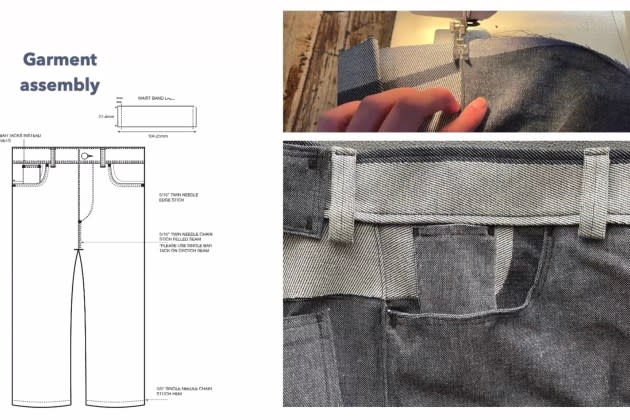New Project Explores Creative and Sustainable Benefits of 3D Woven Jeans

A new student project explores 3D weaving as a solution for the denim industry’s overproduction problem.
In collaboration with production partner Diamond Denim and U.K. design studio Endrime, Eric Groskamp, an engineer student at the Delft University of Technology in the Netherlands, is exploring ways to reduce waste and increase efficiency by applying 3D weaving to jeans.
More from Sourcing Journal
Cotton Incorporated Challenges Students in 3D Design Competition
Consumers Want More Natural Fibers. Here's How to Innovate & Give Them What They Want
Digital Transformation's Role in Creating a More Sustainable Fashion Industry
“Jeans are iconic—almost everybody has a pair. Last year, 4.5 billion jeans were sold, and that amount is projected to grow,” Groskamp said. The impact of jeans goes beyond fashion, however. Groskamp said a standard pair of jeans embodies 33.4 kilos of energy (or the average weight of a large dog) and consumes 3,781 liters of water (enough to fill some swimming pools), he said.
With 3D weaving, Groskamp said manufacturers benefit from zero waste practices and production efficiency due to less labor-intensive production steps.
“It is a new and fundamental tool to tackle some of the environmental challenges that we’re facing. Besides this, this project shows that it can already be done with standard machinery,” he said.
These benefits are also driving Unspun’s new pilot with Walmart. Earlier this month, the fashion tech company and retailer announced plans to make work pants with Unspun’s 3D weaving technology called Vega.
By unifying denim design and production, Groskamp said the weaving technique results in durable multi-layer fabrics. An industrial jacquard loom is applied to a process that combines yarn, fabric garments and patterns design into a file called a map of binding (MLB) created by digital garment design software CLO and optimized by Adobe Illustrator.
“Once you have obtained the MLB, you program it into the jacquard loom and the result is a multi-layer fabric that embrace sustainability and zero waste practices,” he said.
For the project, Groskamp created a prototype jean made from 12 oz. fabric comprised of 30 percent hemp and 70 percent cotton. The jeans have traditional back pockets with a 3D woven seam over the middle.
There’s room to enhance the technology with lasering cutting and automation. 3D weaving shows the most promise for on-demand models and would allow consumers to customize their garments, Groskamp said.
Customization is just one of several new creative opportunities 3D weaving offers. Manufacturers can change the orientation of the weave structure resulting in intricate patterns. They can also alternate between completely different weave structures to create unique combinations of fabrics.
“The innovative design flexibility is something that even if you’re not necessarily interested in the sustainable benefits of 3D weaving, there is a lot of benefits from a design perspective or for creating new and unique ways for brands to stand out,” he said. “Eventually 3D weaving will inspire novel business models with all the future potential that it holds.”

